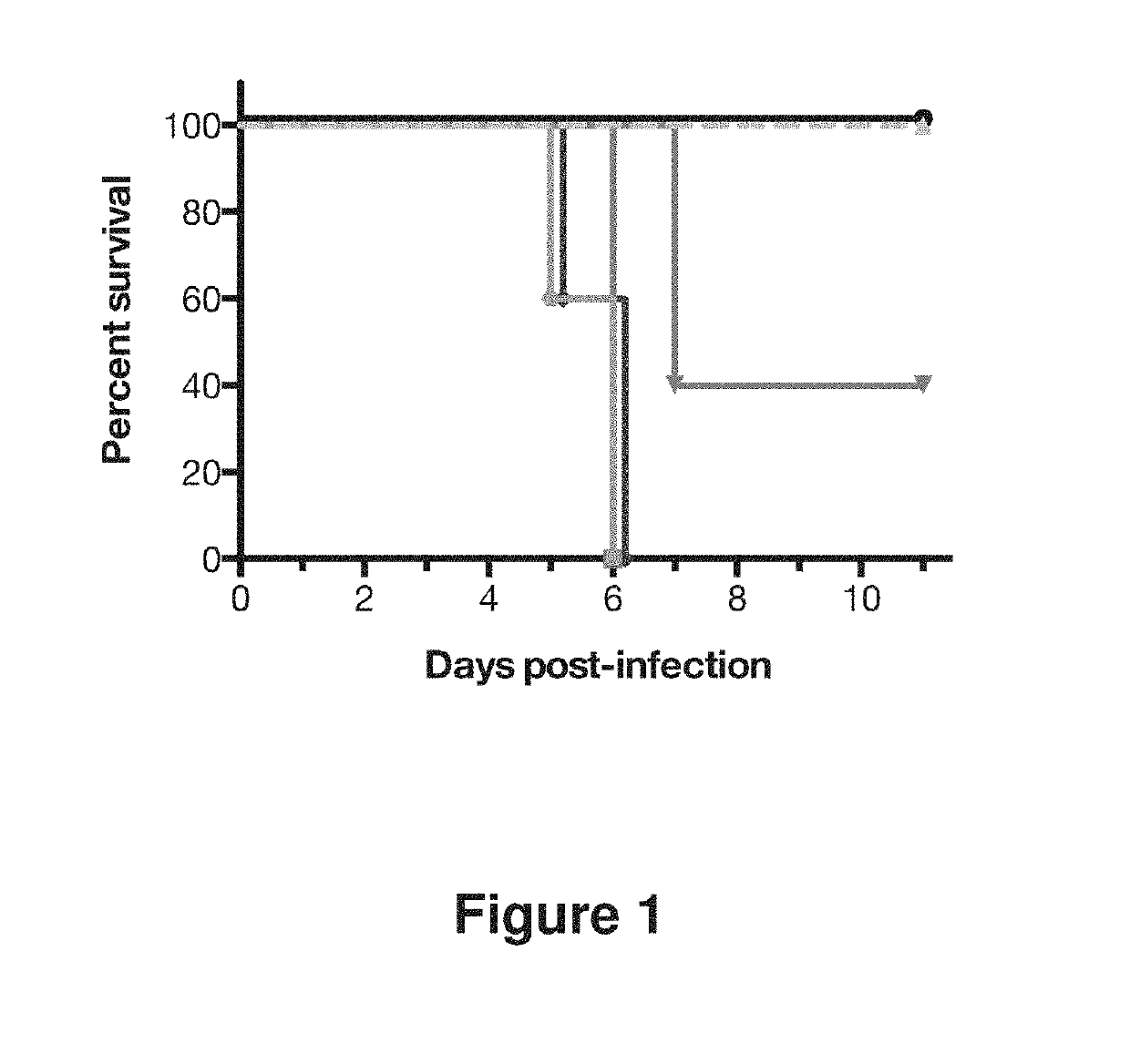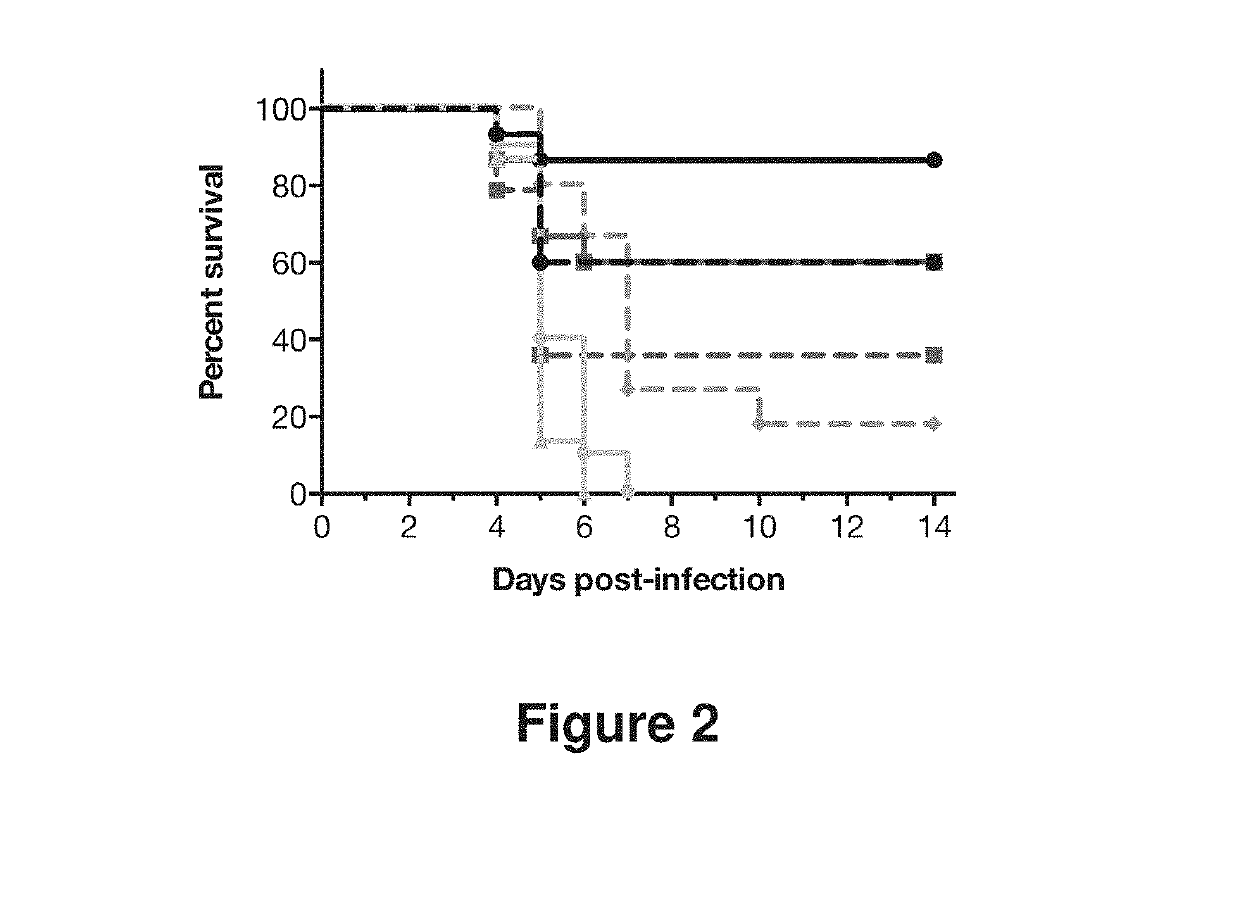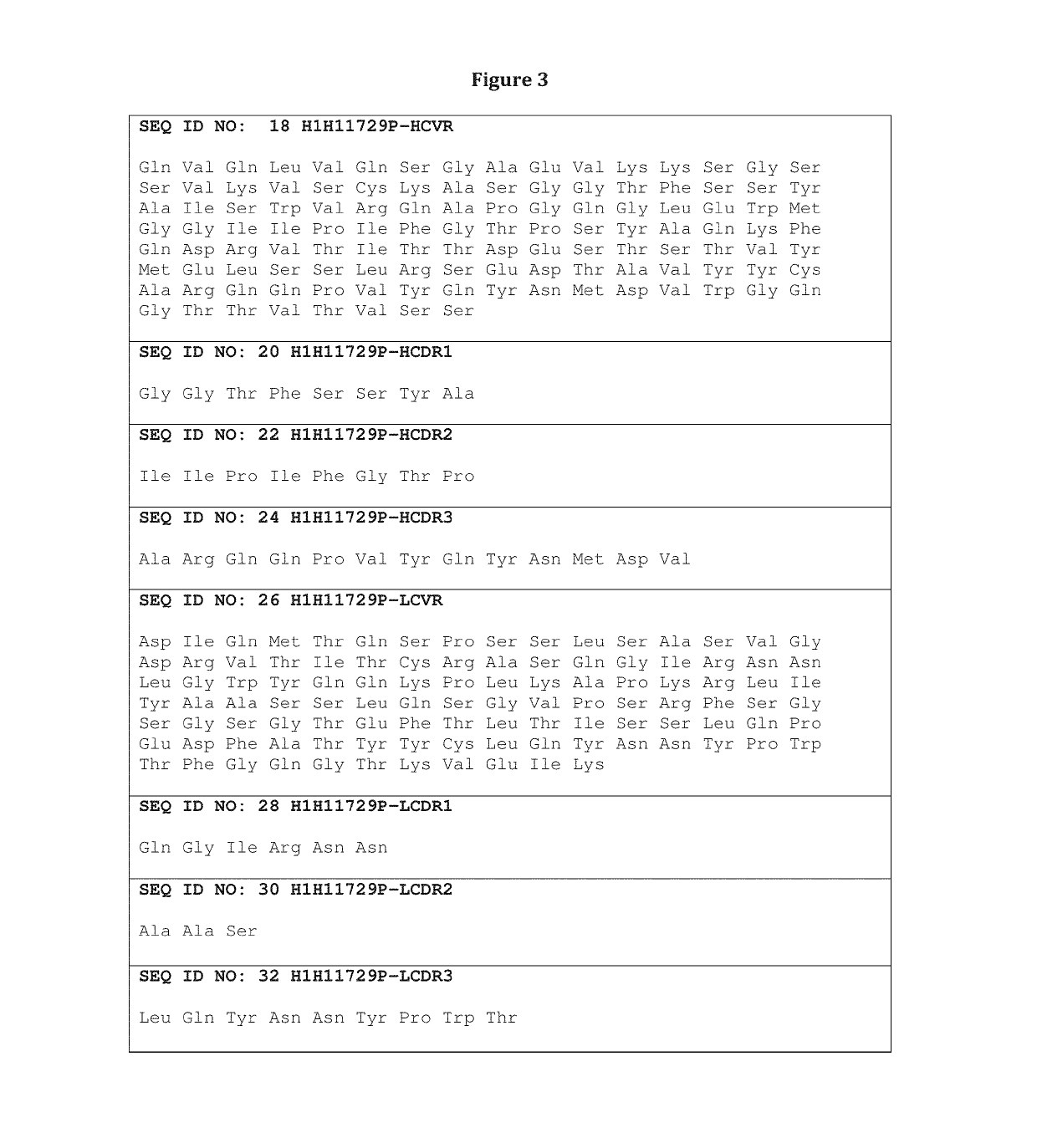Human antibodies to influenza hemagglutinin
a technology of human antibodies and hemagglutinin, which is applied in the field of human antibodies and antigen-binding fragments, can solve the problems of not only high cost, but high efficiency of the process, and it is not always desirable to use this approach in certain patient populations, so as to improve the severity, duration, or frequency of occurrence.
- Summary
- Abstract
- Description
- Claims
- Application Information
AI Technical Summary
Benefits of technology
Problems solved by technology
Method used
Image
Examples
example 1
Generation of Human Antibodies to Influenza HA
[0224]Human antibodies to influenza HA were generated in a VELOCIMMUNE® mouse comprising DNA encoding human immunoglobulin heavy and kappa light chain variable regions. The mice were immunized with an influenza vaccine composition, followed by a booster dose comprising a mixture of five different recombinant hemagglutinin proteins, at a 1:1 ratio of each. The five recombinant hemagglutinin proteins included in the booster were hemagglutinins from H1 A / New Caledonia / 20 / 1999, H5 A / Indonesia / 05 / 2005, H3 A / Victoria / 361 / 2011, H7 A / Netherlands / 219 / 2003 and H9 A / Hong Kong / 1073 / 1988 (Protein Sciences, Catalog Number 3006). The antibody immune response was monitored by an influenza A HA specific immunoassay. When a desired immune response was achieved, splenocytes were harvested and fused with mouse myeloma cells to preserve their viability and form hybridoma cell lines. The hybridoma cell lines were screened and selected to identify cell lines t...
example 2
Heavy and Light Chain Variable Region Amino Acid and Nucleotide Sequences
[0227]Table 1 sets forth the amino acid sequence identifiers of the heavy and light chain variable regions and CDRs of selected anti-influenza HA antibodies of the invention. The corresponding nucleic acid sequence identifiers are set forth in Table 2.
[0228]
TABLE 1Amino Acid Sequence IdentifiersAntibodySEQ ID NOs:DesignationHCVRHCDR1HCDR2HCDR3LCVRLCDR1LCDR2LCDR3H1H11723P246810121416H1H11729P1820222426283032H1H11820N3436384042444648H1H11829N5052545658606264H1H11829N25052545666687072H2aM11829N5052545658606264H2M11830N7476788082848688H1H11830N27476788066687072H1H11903N9092949698100102104H1H14571N106108110112114116118120H2a14571N106108110112114116118120H1H11704P122124126128130132134136H1H11711P138140142144146148150152H1H11714P154156158160162164166168H1H11717P170172174176178180182184H1H11724P186188190192194196198200H1H11727P202204206208210212214216H1H11730P2218220222224226228230232H1H11731P223423623824066687072H1H11...
example 3
Octet Binding Affinities and Kinetic Constants of Monoclonal Anti-Influenza HA Antibodies
[0232]Equilibrium dissociation constants (KD values) for Influenza hemagglutinin (HA) binding to selected purified anti-HA monoclonal antibodies were determined using a real-time bio-layer interferometer based biosensor (Octet HTX) assay. Octet biosensors coated with either anti-mouse Fc (AMC) or anti-human Fc (AHC) capture were used to capture anti-HA monoclonal antibodies, expressed with mouse Fc (AbPID prefix H1M, H2aM, H2bM) or human IgG1 Fc (AbPID prefix H1H) respectively. All the binding studies were performed in HBS-ET Octet kinetics buffer (10 mM HEPES pH 7.4, 0.15M NaCl, 3 mM EDTA, 0.05% v / v Surfactant Tween-20, 1 mg / mL BSA) at 25° C. with plates shaking at a speed of 1000 rpm. Antibody captured Octet biosensors were submerged in wells containing different concentrations of diverse strains of HA (300 nM to 11.11 nM) for 7 minutes followed by dissociation of antibody bound HA protein in ...
PUM
| Property | Measurement | Unit |
|---|---|---|
| pharmaceutical composition | aaaaa | aaaaa |
Abstract
Description
Claims
Application Information
 Login to View More
Login to View More - R&D
- Intellectual Property
- Life Sciences
- Materials
- Tech Scout
- Unparalleled Data Quality
- Higher Quality Content
- 60% Fewer Hallucinations
Browse by: Latest US Patents, China's latest patents, Technical Efficacy Thesaurus, Application Domain, Technology Topic, Popular Technical Reports.
© 2025 PatSnap. All rights reserved.Legal|Privacy policy|Modern Slavery Act Transparency Statement|Sitemap|About US| Contact US: help@patsnap.com



